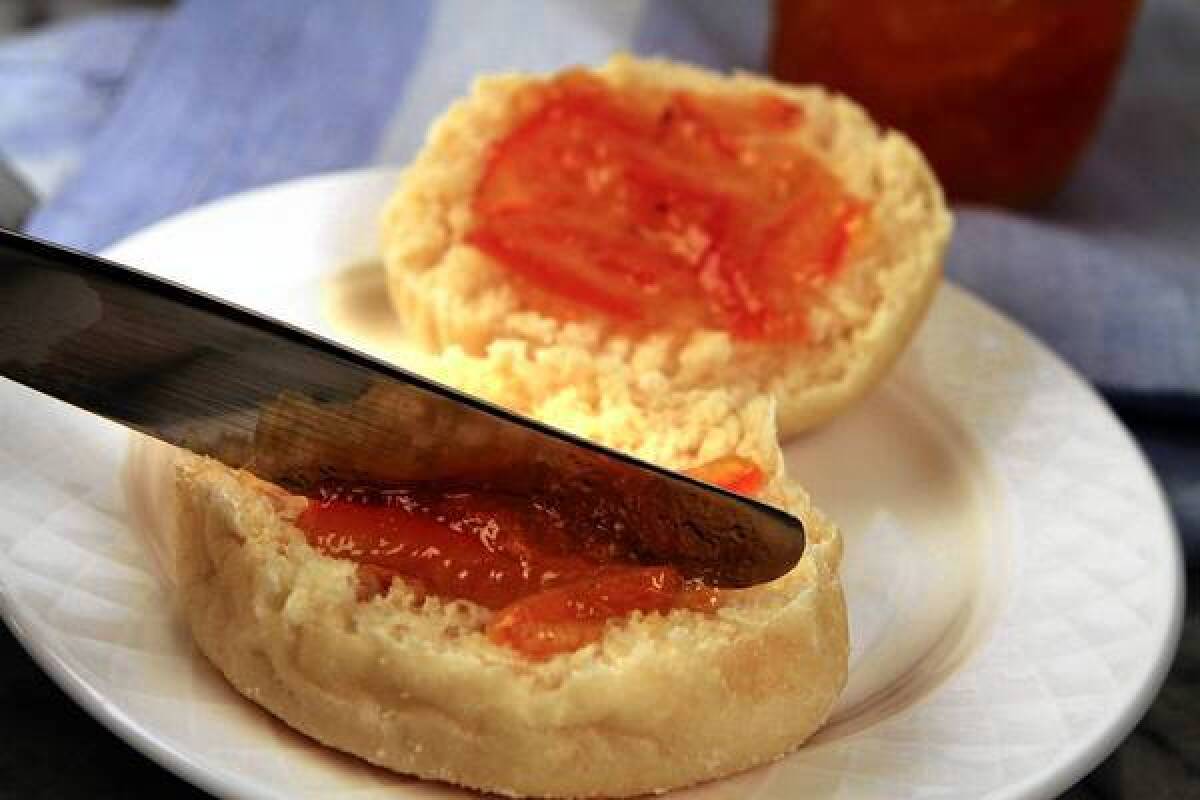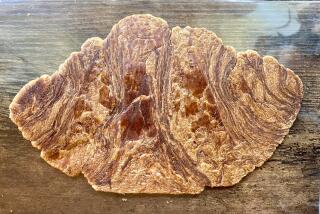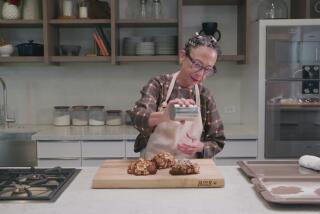Homemade English muffins: righto!

A warm, freshly made English muffin has the subtle tang of yeast-risen dough and a golden-brown crust. Split it open and the crisp exterior gives way to the most delicate interior, light as air, yet slightly chewy, full of peaks and crevices — those magical “nooks and crannies,” made even more magical when the muffin halves are toasted and all but drowned in butter or jam.
Sure, you can find the standard packaged varieties at your grocery store. Maybe you even know of a bakery that makes them from scratch. But have you ever tried to make them yourself? It’s not as hard as you might think, and there is nothing like the flavor of a muffin fresh off the griddle.
Do a search for English muffin recipes and you’ll come up with a wide range of results. Recipes for English muffins run the gamut from firm doughs (such as for breads) to spoonable batters (as if you’re making pancakes).
While most muffins are cooked on a griddle, some recipes offer the option of baking them in the oven. Form each as you might a classic dinner roll, or shape them using muffin rings or a biscuit cutter.
Even the ingredients vary from recipe to recipe. Some are simple, calling for flour, yeast, sugar, salt and water or milk. Others substitute buttermilk for the milk, or cornstarch for some of the flour. Some even add eggs.
And though most English muffin recipes call for a yeast-leavened dough, some add a touch of chemical leavener — baking soda or powder — to lighten the final product.
I tried a number of recipes, testing dough and batter methods and playing with a number of ingredients. In the end, I found that the recipe didn’t need to be complicated at all.
Some bread flour, a touch of sugar, salt and yeast will get you started. Whisk in a little melted butter and enough milk to form a very soft dough — extra liquid helps to give the muffins their airy texture. Most of the dough-based recipes I found contained too little liquid; while the dough might bake up fine for dinner rolls, it was too dense and tough for a light English muffin. Conversely, while the batter-based recipes I tested cooked up light, the results looked and tasted more like pancakes than English muffins.
Make the dough ahead of time — up to a day in advance — refrigerating it so it rises slowly, giving the yeast time to work and develop better flavor. Then divide the dough, rolling each portion in cornmeal and flattening into a disk to rise again.
To cook the muffins, gently heat a griddle over low heat (the crust and texture simply isn’t the same when they’re baked in the oven). Because you’re cooking on a stove top, the flame needs to be set so the muffins will have just enough heat to bake through as the crust forms; if the griddle is too hot, the crust will burn before the muffins are cooked. Check the first few muffins frequently to make sure the heat is just right. When the muffins are cooked on one side, gently flip them over to continue cooking the other side.
Much as you might be tempted to eat them immediately, cool the muffins on a rack for at least a few minutes before serving.
Don’t cut English muffins open with a knife. Instead, pierce the delicate sides of the muffin with the tines of a fork, slowly working your way around the outside edge. Then gently pull apart the halves to properly reveal all the nooks and crannies. Slather with some butter or jam, and you’re bites away from pure bliss.
More to Read
Eat your way across L.A.
Get our weekly Tasting Notes newsletter for reviews, news and more.
You may occasionally receive promotional content from the Los Angeles Times.







